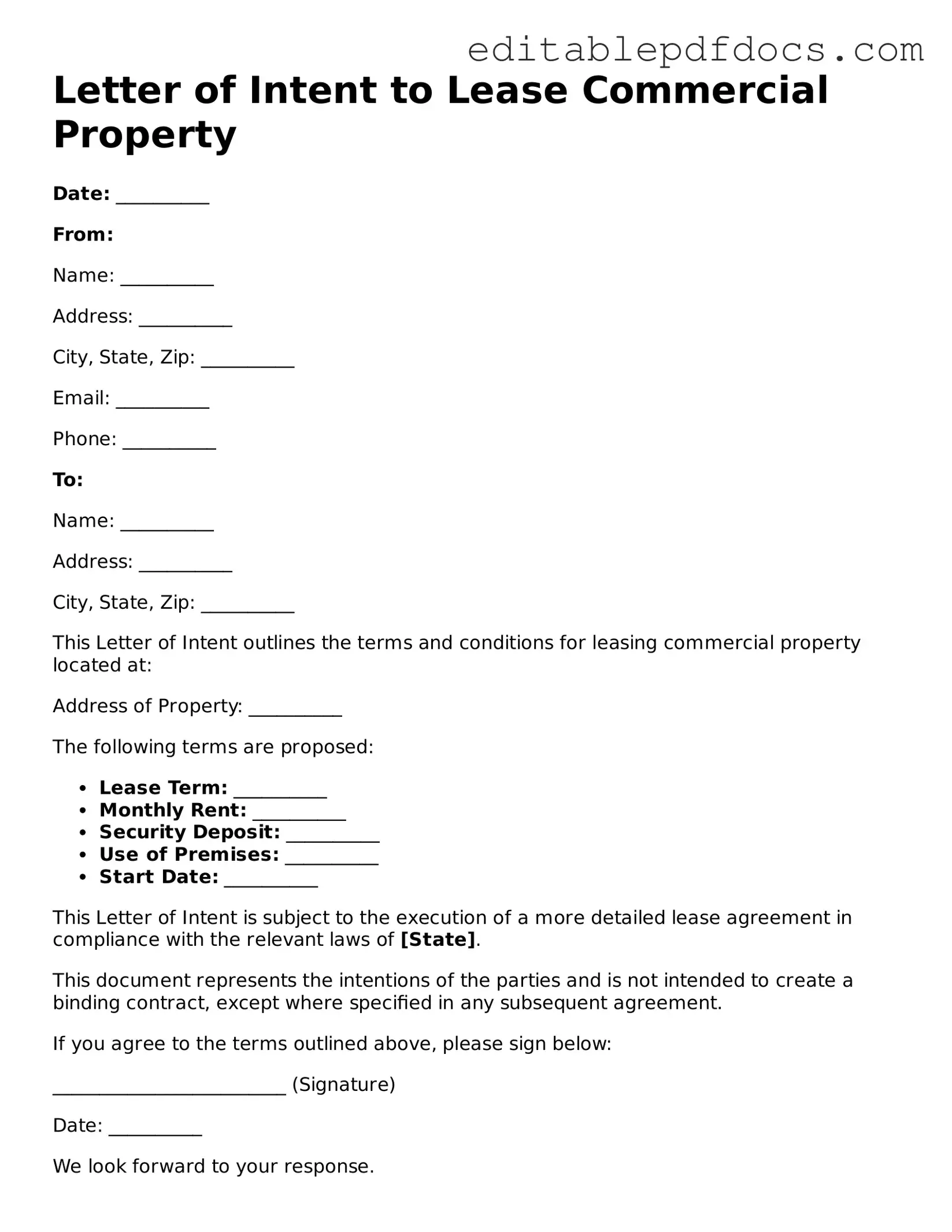When filling out the Letter of Intent to Lease Commercial Property form, individuals often make several common mistakes that can lead to complications later on. One frequent error is the omission of essential details about the property. This can include failing to specify the exact address or not including the suite number, which can create confusion regarding the location.
Another mistake is not clearly defining the terms of the lease. People may overlook important aspects such as the lease duration, renewal options, and rental rates. These details are crucial for both parties to understand their obligations and rights under the agreement.
Inadequate descriptions of the intended use of the property can also pose problems. If the purpose of the lease is not clearly stated, it may lead to disputes about what activities are permissible in the space. Clear communication regarding intended use helps avoid misunderstandings.
Some individuals neglect to include information about security deposits or other financial obligations. Failing to specify the amount and conditions related to the security deposit can create issues during lease negotiations and when the lease ends.
People often forget to include contingencies that could affect the lease agreement. For example, conditions related to financing or zoning approvals should be outlined to protect the interests of both the landlord and tenant.
Inaccurate contact information is another common oversight. Providing outdated or incorrect phone numbers and email addresses can hinder effective communication between the parties involved.
Additionally, some individuals do not seek legal advice before submitting the form. This can result in misunderstandings about legal rights and responsibilities, which may lead to disputes down the line.
Another frequent mistake is not reviewing the form for errors before submission. Typos or incorrect information can undermine the credibility of the document and lead to delays in the leasing process.
People sometimes fail to date the Letter of Intent. A missing date can create ambiguity regarding when the terms were agreed upon, which can complicate future negotiations.
Lastly, individuals may overlook the importance of signatures. A signed Letter of Intent is a crucial step in the leasing process. Without the necessary signatures, the document may not hold any legal weight, potentially jeopardizing the agreement.
